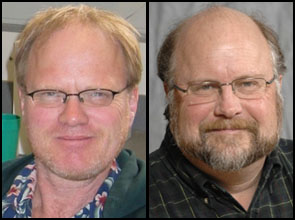
Two UNL researchers have contributed to a groundbreaking study that addresses a longstanding scientific debate and represents a significant advance in the field of ecology.
In the early 1970s, British ecologist J. Philip Grime suggested a direct relationship between plant species diversity and habitat productivity that followed a bell-shaped curve. Ecologists have relied on the so-called “hump-shaped” model ever since.
But a global research collective that includes UNL biologist Johannes “Jean” Knops and David Wedin, professor in plant and ecosystem ecology in the School of Natural Resources, is arguing there is insufficient evidence to support Grime’s textbook-standard model. The collective’s researchers now say that the cause of productivity is more complex than initially believed.
“There is no fixed relationship. It all varies,” Knops said. “So local environment, local conditions determine what’s going on.”
The new findings are detailed in the Sept. 23 issue of the journal Science. In addition to contributing data, Knops is one of the paper’s 58 authors. The lead author is Utah State University’s Peter Adler.
Researchers will now turn their attention to examining the role resources play. They will increase grasslands’ productivity by fertilizing the sites used in the initial study. They also will monitor to determine the effect that has on plant species diversity.
Ultimately, such answers could help those who manage natural areas and those who work with rare and endangered plant species, Knops said. To some degree, farmers may benefit from such insights, too.
The study’s findings were a result of an innovative volunteer network called Nutrient Net, or “NutNet.” The network is based at the University of Minnesota and was created three years ago to investigate biodiversity and ecosystem processes in grasslands around the world using standardized sampling methods. Coordination of the network is funded by a National Science Foundation grant.
Knops contributed data taken from Cedar Point Biological Station in Ogallala. Wedin contributed data from a site near Valentine in north-central Nebraska. Altogether, the collaborative study included 48 sites spanning five continents.
- Jean Ortiz Jones, University Communications